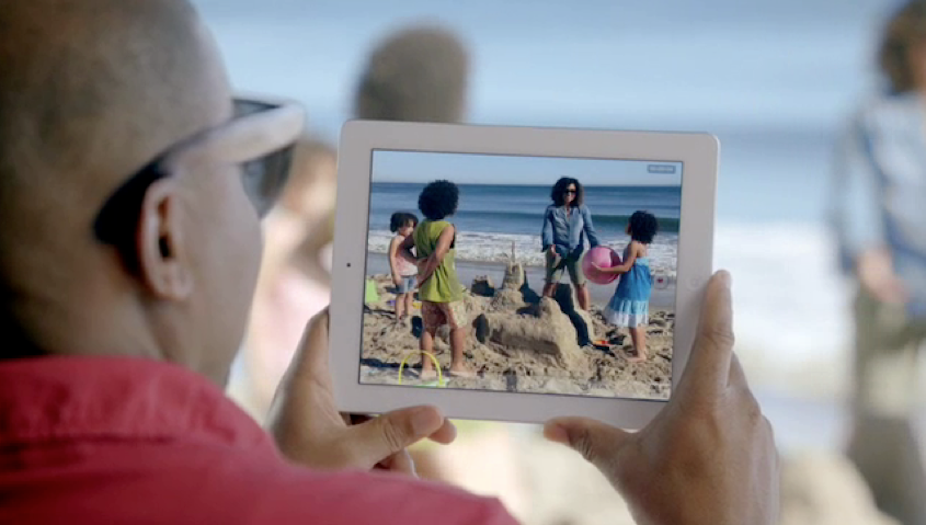Ever since the death of Steve Jobs, interested onlookers have been watching for the first missteps in Apple’s seemingly faultless journey to becoming the world’s most valued and valuable company.
Because commentary on Apple is so polarised, it’s difficult to judge whether today’s announcement of the new iPad will continue to propel Apple’s growth or herald the start of its decline.
Steve Jobs was, among many things, a consummate magician. With sleight of hand and a smokescreen of charisma, he made small changes in Apple products seem momentous. It is not clear whether Apple’s current CEO, Tim Cook, has the same tricks up his sleeve.
Cook’s plight was not helped by the announcement today of Apple’s new iPad. As was rumoured in the press beforehand, the new iPad is more of a specifications upgrade than a radical redesign.
The new iPad boasts a higher resolution “retina” display (2048 x 1536 pixels) which analysts have already dismissed as being overkill. Displaying a 1080p HD movie would leave 33% of the screen’s pixels unused.
Of course the new iPad’s high resolution would be really useful if Apple was going to split the screen and allow more than one app to display at the same time. Sadly, that’s not going to happen, at least not with the latest operating system upgrade – to iOS 5.1 – which was also announced today.
The new iPad, which will go on sale in Australia as early as March 16, also features a faster processor – an A5X compared to an A5 in the iPad 2. The A5X, Apple claims, is twice as fast as the A5. This sounds impressive but there really haven’t been any complaints about the iPad 2 being too slow. Of course, faster processors and graphics chips are necessary when you increase the screen resolution. Perhaps Apple has upgraded the processor for that reason.
Perhaps the most popular upgrade, however, will be the higher-quality and higher-resolution cameras: a five megapixel camera on the rear of the device and a HD camera at the front. Apparently, the idea of employing a tablet as a camera (unwieldy, to say the least) has not deterred people from using the iPad in this way.
And finally there is the move to support 4G LTE wireless networking – the next generation of wireless connectivity.
The limited availability of 4G in most countries (including Australia) and its extra power requirements would also presumably limit this feature’s popularity. That said, the larger battery in the new iPad partially offsets this. Just being able to say that your iPad supports 4G is probably reason enough for many people to buy the latest incarnation of the Apple tablet.
So, should we all be excited?
To answer this, it’s worth looking back to the launch of the iPhone 4S in October of last year. Pre-launch rumours had primed consumers to expect the iPhone 5, only for the iPhone 4S to be launched – more or less a specification upgrade. Any disappointment was seemingly offset by the launch of Siri and Apple got away with an otherwise unremarkable upgrade.
Although the new iPad has a voice dictation feature, it’s not Siri. Similarly, the expected announcement of the new Apple TV also didn’t happen.
The Apple TV is a rumoured 37-inch TV that is touch capable, can be operated through Siri and has a camera that can be used for hand gestures.
But Apple did announce an upgrade to its existing media box which, confusingly, is also called the Apple TV. But this launch was expected and is hardly earth-shattering news.
But perhaps consumers are simply happy to see incremental improvements as long as such improvements are in the right direction. After all, it’s unrealistic to expect a company – even one as large and influential as Apple – to introduce revolutionary new products every year.
It’s worth mentioning that any buzz around the announcement of the new iPad – positive or negative – will really have little impact on whether the device will sell. Some are predicting Apple will sell 65 million iPads this year, up from 51.4 million in 2011. People with the original iPads will have enough incentive to trade up to the new iPad. Further expansion into the Chinese market, and within existing markets, will also see new iPad users join the fray.
What Apple has succeeded in doing is convincing people they need multiple devices and persuading them to buy an iPad instead of a second or third PC in the home. This trend will continue when the Apple TV is eventually announced.
Apple’s annual product announcements are now almost a national pastime in the US. A mythology has grown around them, fed by rumours in the lead-up to announcements and analysis after the event. All of this hype, both good and bad, is rendered largely irrelevant by the queues of expectant customers outside the Apple shops, waiting to get their hands on whatever has been announced. At the end of the day, it is hard to see that changing any time soon.
Now if you’ll excuse me, I need to go and line up.

